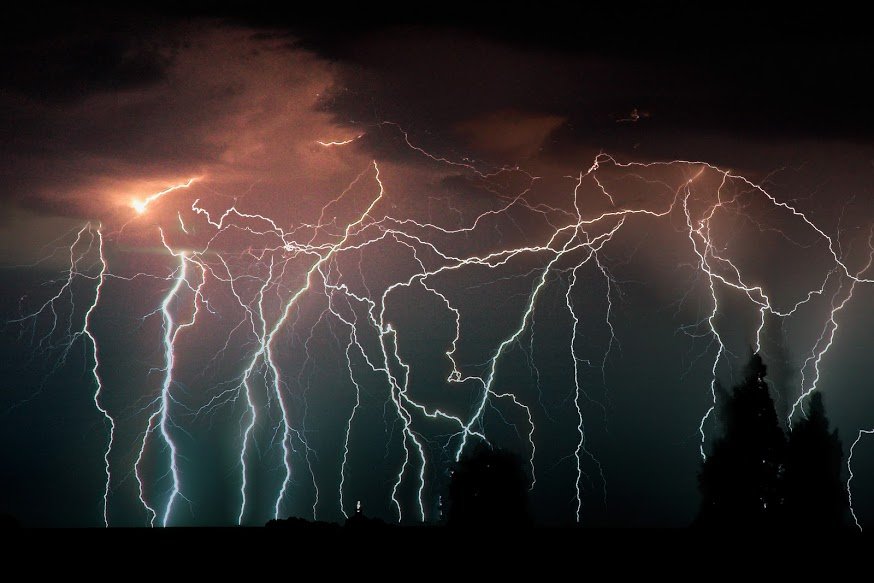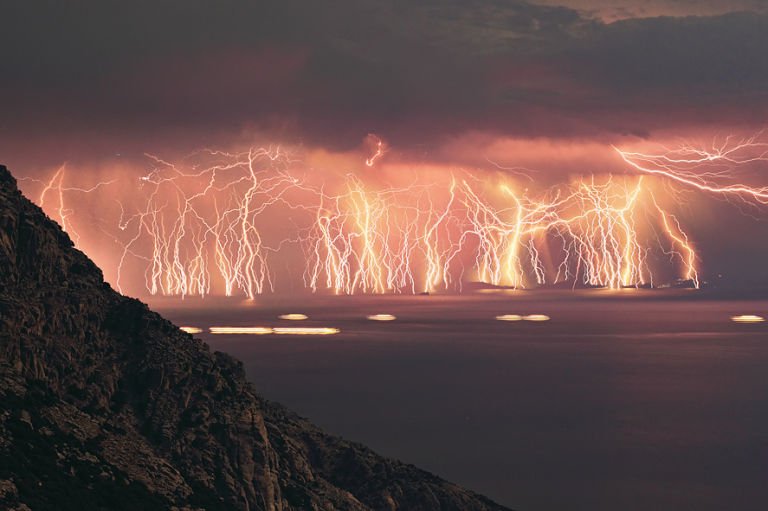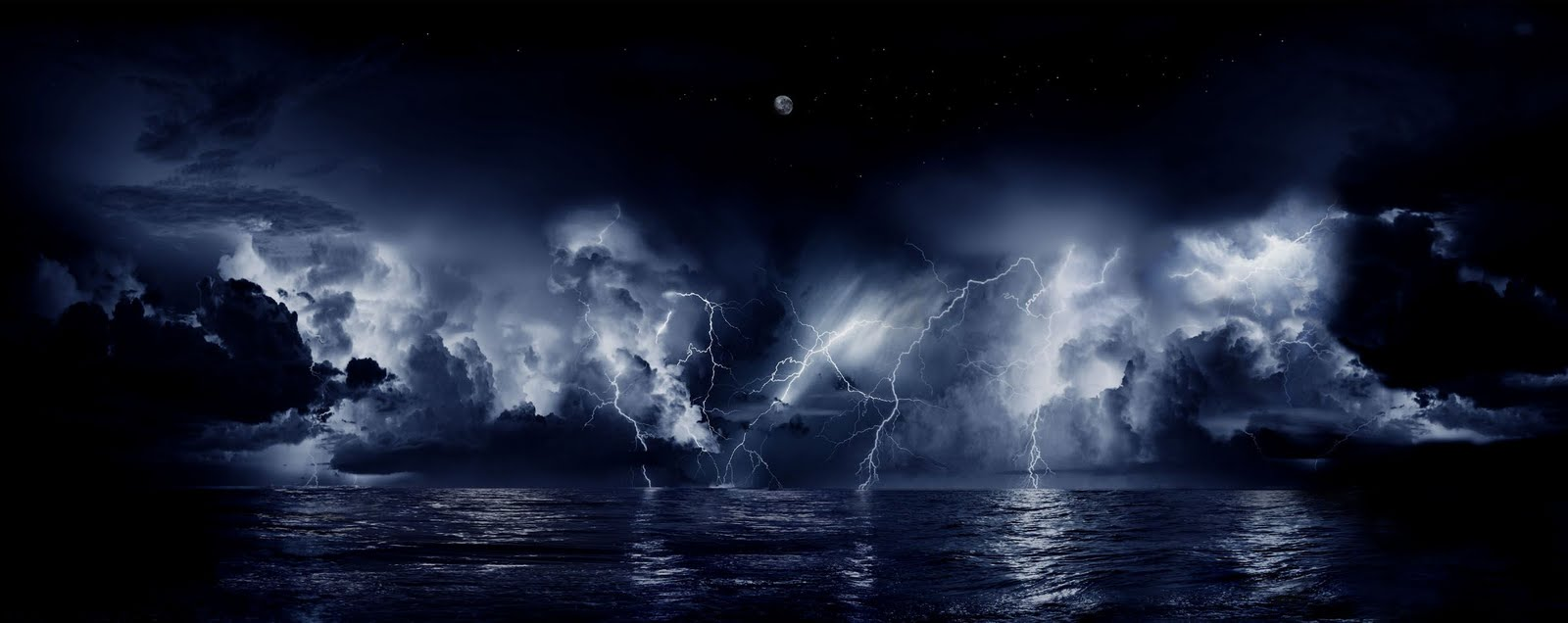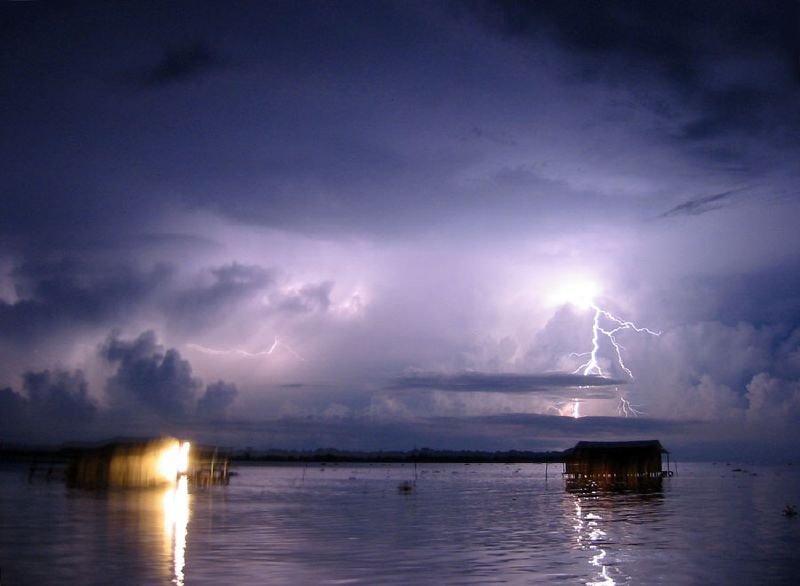New week, new post for my steemian nature lovers! Get your popcorn, sit back and enjoy an epic battle of the Titans with bolts of lightning hitting the earth! A site of Apocalypse is about to unveil before you and the world will no longer be what it used to be…just kidding, there’s nothing to be afraid of, you’re completely safe.
As you might have guessed, today we’re looking into a thunderstorm, but why is it strange? Because it got a place in the Guinness Book of Records as the storm with the highest concentration of lightning (with 250 strikes per square kilometer per year). The phenomenon takes place over Venezuelan Lake Maracaibo and is named after the Catatumbo River, which meets the lake on its journey down the northern mountains that surround the Maracaibo basin.
The picture speaks for itself!

Image source:mysteriousuniverse.org
Catatumbo Lightning
For 200-300 days a year the sky shows no mercy as he punishes Lake Maracaibo for her ancient sins. The 35-million-year-old lake is among the few ancient lakes still remaining on earth (probably the second oldest on the planet) and is the largest lake in South America.
The spectacular sight lasts for almost 10 hours a day - well, basically a night - with lightning that strikes on average 28 times a minute (that’s 3600 bolts an hour) over and around the lake and the wetland formed by the Catatumbo River. If you consider that the National Weather Service determines 12 strikes per hour as "excessive" then it’s no wonder why the storm got awarded with a Guinness Record. The bolts are also incredibly powerful, with each one ranging from 100,000-400,000 amp (If only we could take advantage of all the electricity produced…).
The colors of the striking bolts vary from red, orange, blue and purple owing to dust particles and water vapor presence in the atmosphere. Some say that despite its fierceness, the storm is as silent as the grave, but this is not true. All lightning produces thunder, but it is only audible within a certain distance range. Even the mightiest lightning will produce thunder conceivable by ears standing just a few miles from the striking point. The raging lightning attack occurs at a distance of 30-60 miles (50-100 kilometers) from potential observers, so unless you’re a bionic mutant with super hearing powers, you won’t hear a hush.
The storms reach their peak during the wet season around October, and ease off in the drier months of January and February. Another strange thing about the Catatumbo lightning phenomenon is that it unexpectedly stops for long periods before it strikes again. It looks as if nature gets too tired hitting hard on the area, that retracts to regroup.

Image source:mysteriousuniverse.org
Why does it happen?
Scientists have been squeezing their brains to find a sustainable theory on its occurrence. They mostly believe it derives from the wind flows in the area, but people got other ideas in their heads as to what could possibly bring those storms about.
- From 1966 to 1970, Venezuelan scientist, Andrew Zavrostky, visited the area three times in order to study the phenomenon. He came to the conclusion that the lightning's epicenters lie in the marshes of Juan Manuel de Aguas National Park, Claras Aguas Negras, and west Lake Maracaibo. In his 1991 study he concludes that the lightning occurs due to the fluctuation of warm and cold air currents in the area. His study also speculates that the presence of uranium in the bedrock contributes to the formation of the lightning. So far, no evidence has been brought to light to support this uranium-based theory.
- From 1997 to 2000, another scientific group formed by Nelson Falcón and his collaborators conducted four studies. Their theory suggests that methane production from the area’s swamps contributes to the lightning phenomenon by increasing air conductivity (Methane is produced from the marshes as organic matter degrades within them. It’s the same mechanism we found in my post about Methane Ice Cubes. The area is also a rich oil deposit, which chips in the production of methane). But methane concentration is not high enough to consider this theory possible.
And the winner is:
The most plausible theory so far is that the terrain’s special features contribute to the lightning storm.
As you can see in the map below:
The basin where Lake Maracaibo lies is surrounded by the Andes mountain ranges on three sides, forming a V-like wall. Hot and moist incoming winds from the Caribbean Sea get trapped in there to meet the cool winds descending the mountains. Their encounter ends up to condensation which results to cloud formation.
Within the clouds, upward and downward movement of water drops and ice particles separate the negative and positive charges of the cloud particles. When this segregation becomes too great we get a negative bottom and positive top. The ground underneath the cloud gets positively charged and when the voltage is great enough, the air between the cloud and the ground works as a conductor and then…LIGHTNING!
This vicious circle is also powered by the constant supply of hot, moist air as the lake’s water evaporates under the hot sun. It is a remarkable set of coincidences, isn’t it?
The man in the video gives a pretty well description of the phenomenon, check it out:
How did it affect human activity?
Natives of the area called it “River of Fire” and believed it was a sign from the gods. Over the course of the years, the phenomenon has helped sailors navigate the seas, they called it the “Lighthouse of Catatumbo” or the “Maracaibo Beacon”. It has also helped unveil and prevent two invasions (one from the English in 1595 and the other from the Spanish in 1823).
The unfortunate about this story is that, since lightning activity is so great, accidents are very frequent. Many fishermen of the lake have been deathly struck by lightning while fishing. The Catatumbo Camp records state that nearly three people every year lose their lives in the area.
The silver lining
All this lightning turns the area into one of the biggest ozone producers in the world, contributing to the building of a strong ozone layer in the atmosphere.
REFERENCES
mysteriousuniverse.org
wikipedia.org
bbc.com/earth
iflscience.com
stormhighway.com
guinnessworldrecords.com
sciencelearn.org.nz
earthnetworks.com
worldatlas.com
Thank you for reading this article! If you liked my story you can always follow me @ruth-girl, for more doses of natural wonders! For the ones that missed the previous "episodes" of my series, you can check: Volcanic Lightning - Bioluminescence (Glowing Algae) - Flammable Ice - The Door To Hell - Blue Lava and the list becomes longer every week!
Interested in science? Please, don't forget to check the @steemstem project, a community-driven project meant to promote well-written, high-quality, STEM-related content (STEM as for Science, Technology, Engineering and Mathematics).
And for those engaging with education, @steemiteducation is here to join all steemian educators in their common cause of making our job easier, more effective and more fun!
Until our next post,
Steem on, people, and keep smiling!




